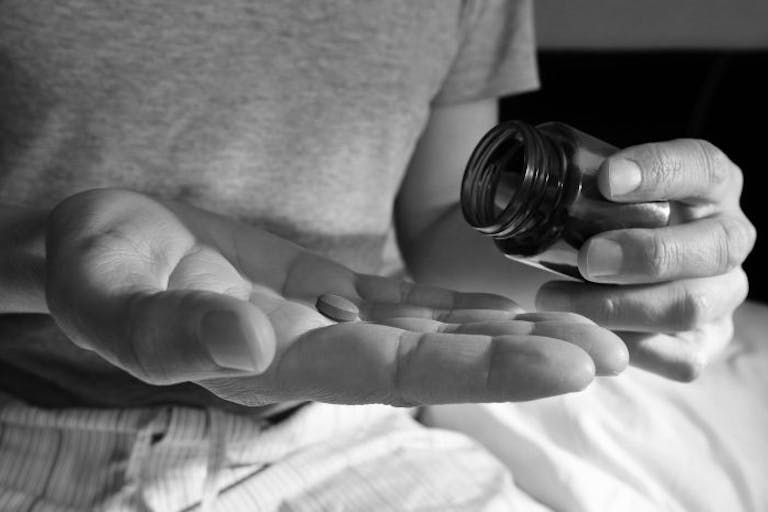
Research shows Catholic support for IVF declines once Church teaching is understood
Angeline Tan
·
Death with dignity? Woman throws grandmother an assisted suicide party
As assisted suicide grows in popularity across the world, advocates continue to insist it is necessary to prevent people from dying long, painful deaths from terminal illnesses. This, they say, is death with “dignity.” Rather than dying of cancer, it is better for someone to commit suicide with the help of a doctor, they claim. Yet this is rarely what ends up happening; the supposed safeguards in place fail to limit assisted suicide to those who are dying, and it instead becomes a free-for-all for anyone who is vulnerable to suicidal thoughts. In Canada, one woman’s editorial in Toronto Life served as a perfect example, as she wrote about throwing her grandmother an assisted suicide party.
Susie Adelson wrote about the decisions that led her grandmother, Sonia Goodman, to decide she wanted to die. Goodman wasn’t dying, but had lost her husband and two of her children. Other issues were also affecting her decision. “Over the years, she had suffered a few serious falls. One resulted in a broken hip, and the subsequent procedures to restore her mobility had taken their toll,” Adelson wrote, adding that Goodman felt she was “done” with life at 88.
It’s important to note that Goodman was not dying when she made this decision, although she had become ill. “During a visit to the ER with sepsis and extreme pain, she informed the team at Sunnybrook that she wanted help ending her life,” Adelson explained. “At first, the doctors suggested palliative care, but she was adamant: no more surgeries, no more drugs, not even antibiotics. She had watched her friends pass away and my mother suffer, and she didn’t want to go through that.”
READ: Study: Assisted suicide can be painful, prolonged and inhumane
So doctors agreed she could go through with assisted suicide, in just 10 days. Adelson said no one in her family argued, because they knew Goodman was “strong-willed.” And Adelson helped throw her grandmother a party, where she would die in front of her family and friends. Everyone toasted her and shared memories, and watched as doctors killed her.
On Twitter, one of her doctors shared her story as an example of what a “good death” could be, despite noting that Goodman was not dying; she was simply elderly. Goodman was septic, yes, but her doctor told her this was treatable with antibiotics. She was also in pain, but her doctor said the pain was alleviated with other procedures, and she improved — but still wanted to die. “She foresaw being confined to her apartment, in pain, struggling with her walker,” the doctor tweeted. “No more walks outside. No trips to the grocery store. No playing bridge with her friends, as she had done for years. She wasn’t interested in living like that.”
Article continues below
Dear Reader,
In 2026, Live Action is heading straight where the battle is fiercest: college campuses.
We have a bold initiative to establish 100 Live Action campus chapters within the next year, and your partnership will make it a success!
Your support today will help train and equip young leaders, bring Live Action’s educational content into academic environments, host on-campus events and debates, and empower students to challenge the pro-abortion status quo with truth and compassion.
Invest in pro-life grassroots outreach and cultural formation with your DOUBLED year-end gift!
He then said that Goodman’s death was “the best death” he had ever witnessed.
Here we have a woman who was, without a doubt, very much loved and who led a rich and fulfilling life. But this is what assisted suicide does: it makes it possible for people to kill themselves — or be killed by their doctors — simply because they are elderly.
Goodman was not dying. The conditions she had were treatable. Quality of life is a valid issue, but it is seemingly only when someone is a member of an undesirable class that it becomes an issue worthy of death. If a young, able-bodied person sees their life as no longer worth living, citing what they feel is a poor quality of life, suicide is rightly seen as a horrific thing, and we fight against it. There are countless resources and support systems in place to show this person that life is still worth living, and that their death would be a tragedy. In other circumstances, for other people, suicide is seen as party-worthy.
If someone is elderly, like Goodman, then no longer do we fight to convince them that life is not worth living. And if they are poor, sick, disabled, or mentally ill, death is considered acceptable — even dignified. This is not a good death. It’s a tragedy.
“Like” Live Action News on Facebook for more pro-life news and commentary!
Live Action News is pro-life news and commentary from a pro-life perspective.
Contact editor@liveaction.org for questions, corrections, or if you are seeking permission to reprint any Live Action News content.
Guest Articles: To submit a guest article to Live Action News, email editor@liveaction.org with an attached Word document of 800-1000 words. Please also attach any photos relevant to your submission if applicable. If your submission is accepted for publication, you will be notified within three weeks. Guest articles are not compensated (see our Open License Agreement). Thank you for your interest in Live Action News!

Angeline Tan
·
Analysis
Cassy Cooke
·
Analysis
Cassy Cooke
·
Analysis
Cassy Cooke
·
Analysis
Cassy Cooke
·
Analysis
Nancy Flanders
·
International
Cassy Cooke
·
Analysis
Cassy Cooke
·
Analysis
Cassy Cooke
·
Analysis
Cassy Cooke
·
Analysis
Cassy Cooke
·